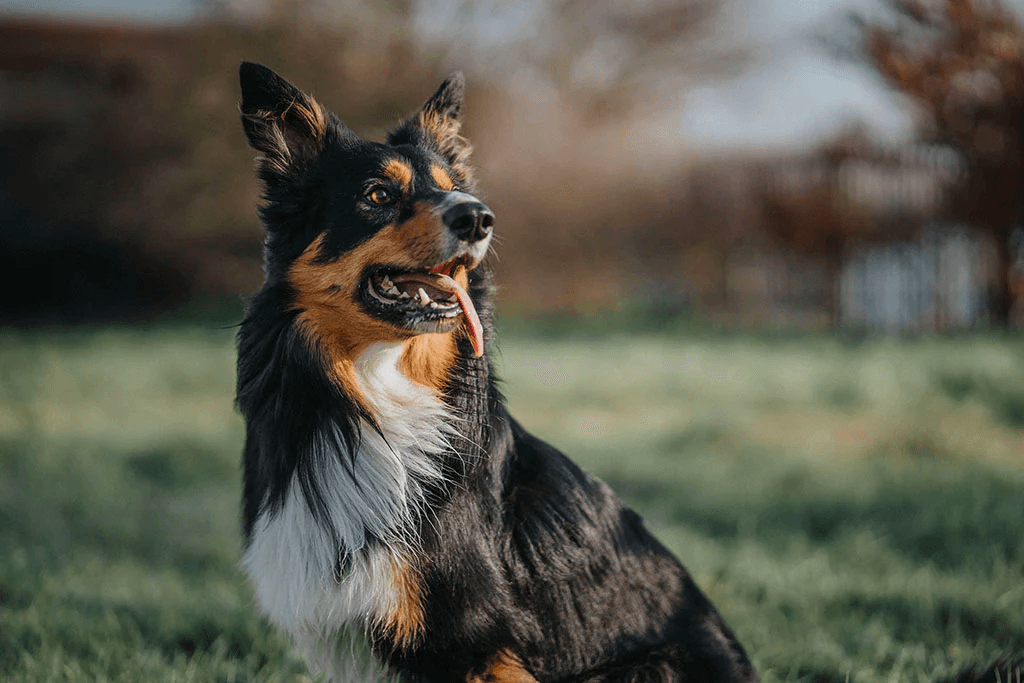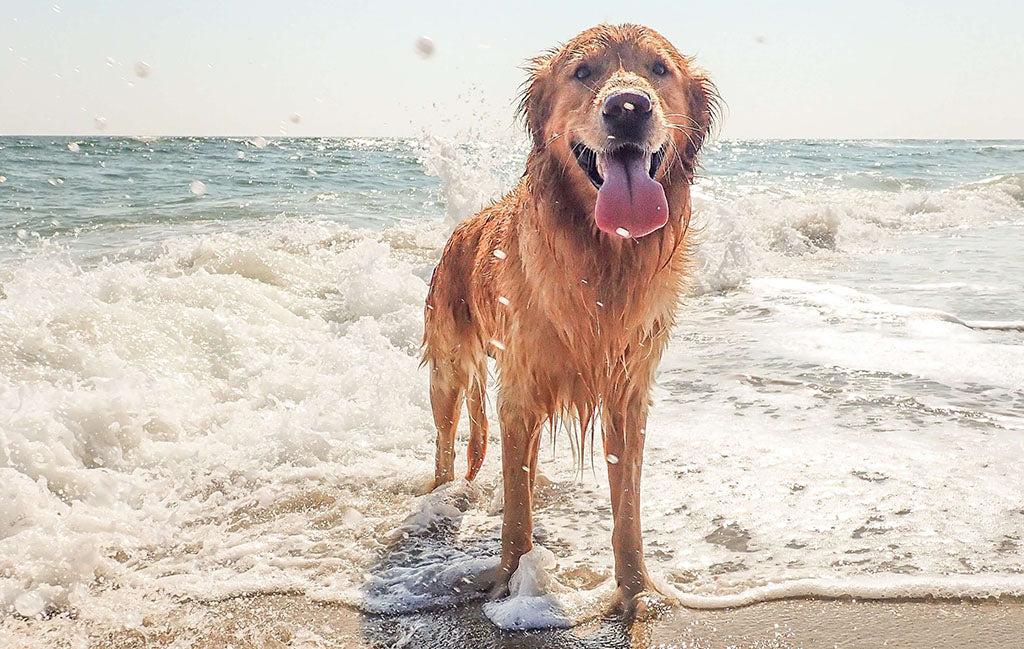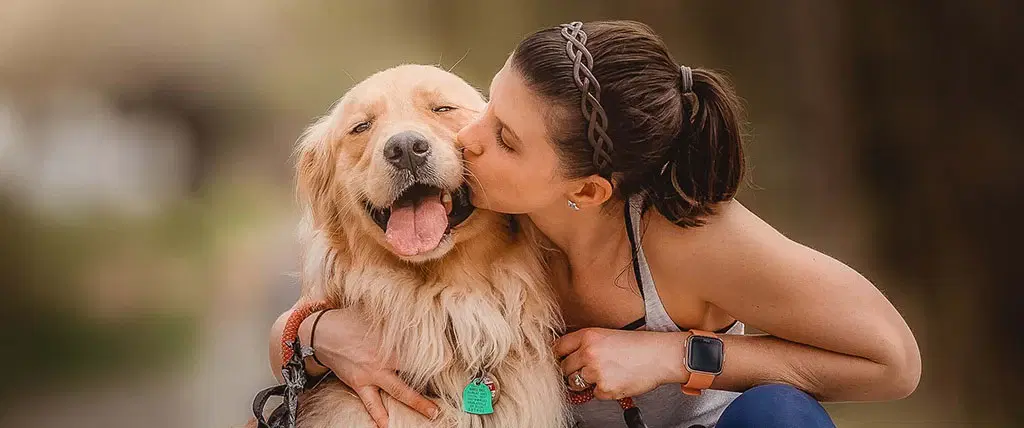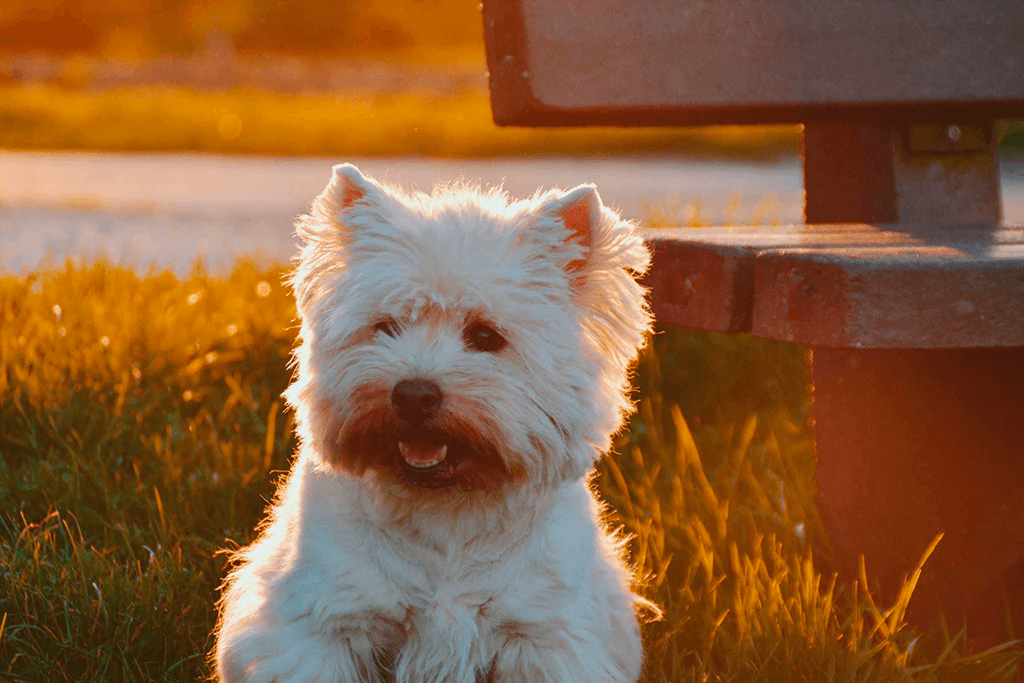Dogs can jump surprisingly high; pet owners often don’t realize precisely how impressive their pup’s leap is until they end up scaling the fence or climbing over the stairgate. In this fun and informative guide, we take a look at exactly how high dogs can jump, comparing breeds, sizes, and body types. If you’re worried about your dog jumping the fence, preparing to enter your pup into the hurdles event at a show, or simply curious, this one’s for you!
How High Can Dogs Jump Really?
It depends on the breed, size, and body type of your dog. Some dogs, like Border Collies and Australian Shepherds, are famous for their sky-high jumps and athletic builds. Others, like Bulldogs or Dachshunds, have body structures that make jumping a little more of a challenge (and potentially a risk).
It’s also important to remember that puppies and senior dogs will have very different jumping abilities. Puppies are still developing their muscles and coordination, while senior pups might be limited by joint issues like arthritis or hip dysplasia.
Table of Contents: Dog Jumps – A Breakdown by Breeds
- How High Can Puppies, Dogs & Seniors Jump – By Breed
- Why Does My Dog Jump So Much, and Can I Train Them to Stop?
- Should I Be Worried About My Dog Jumping the Fence?
- How Do I Stop My Dog Jumping On The Bed?
- Is It Bad if a Short Dog Jumps Off The Sofa?
- The Highest Ever Recorded Dog Jump
- Conclusion: Dog Jumping – What Owners Need to Know

How High Can Puppies, Dogs & Seniors Jump – By Breed
Puppies are so adorable, aren’t they? A little less so when they’re leaping over stair gates and chewing the sofa. Jumping ability varies hugely between breeds and life stages, so here’s a handy breakdown to give you a rough idea of what to expect (and prepare for!).
Here’s a Breakdown of Dog Jump Heights by Breed:
| Airedale Terrier | Medium | Muscular, wiry | 1–2 ft | Up to 4 ft | 1.5–2 ft |
| Australian Shepherd | Medium | Athletic, agile | 1.5 ft | 3–4 ft | 2 ft |
| Beagle | Small | Compact, strong legs | 1 ft | 2–3 ft | 1.5 ft |
| Border Collie | Medium | Lean, high energy | 2 ft | 4–6 ft | 2–3 ft |
| Boxer | Medium-Large | Strong, springy | 1.5 ft | 4–5 ft | 2–3 ft |
| Bulldog | Medium | Stocky, heavy | 0.5 ft | 1–2 ft | 0.5–1 ft |
| Chihuahua | Toy | Tiny, delicate | 0.5 ft | 1–1.5 ft | 0.5 ft |
| Corgi | Small | Long body, short legs | 0.5–1 ft | 1.5 ft | 0.5–1 ft |
| Dachshund | Small | Long spine, short legs | 0.5 ft | 1–1.5 ft | 0.5 ft |
| Doberman | Large | Sleek, muscular | 2 ft | 5–6 ft | 2–3 ft |
| French Bulldog | Small | Chunky, low centre | 0.5 ft | 1–1.5 ft | 0.5 ft |
| German Shepherd | Large | Strong, athletic | 2 ft | 4–5 ft | 2–3 ft |
| Golden Retriever | Large | Muscular, balanced | 1.5 ft | 3–4 ft | 2–3 ft |
| Great Dane | Giant | Tall, heavy frame | 1 ft | 2–3 ft | 1.5 ft |
| Husky | Medium-Large | Agile, strong | 2 ft | 4–5 ft | 2–3 ft |
| Labrador Retriever | Large | Friendly, solid build | 1.5 ft | 3–4 ft | 2 ft |
| Labradoodle | Medium-Large | Lean, springy | 1.5–2 ft | 4 ft | 2 ft |
| Maltese | Toy | Fluffy, delicate | 0.5 ft | 1–1.5 ft | 0.5 ft |
| Maltipoo | Toy/Small | Lightweight | 0.5–1 ft | 1.5–2 ft | 0.5–1 ft |
| Miniature Schnauzer | Small | Compact, alert | 1 ft | 2.5–3 ft | 1.5 ft |
| Pitbull | Medium | Muscular, powerful | 1.5–2 ft | Up to 5 ft | 2–3 ft |
| Poodle (Standard) | Medium-Large | Graceful, springy | 2 ft | 4 ft | 2–3 ft |
| Pug | Small | Round, short legs | 0.5–1 ft | 1–1.5 ft | 0.5–1 ft |
| Rottweiler | Large | Solid, muscular | 1.5 ft | 3–4 ft | 2 ft |
| Shih-Tzu | Toy | Short-legged, fluffy | 0.5 ft | 1–1.5 ft | 0.5 ft |
| Siberian Husky | Medium | Agile, athletic | 1.5–2 ft | 4–5 ft | 2–3 ft |
| Yorkshire Terrier | Toy | Small, lightweight | 0.5 ft | 1.5–2 ft | 0.5–1 ft |
Why Does My Dog Jump So Much, and Can I Train Them to Stop?
Jumping is a natural behaviour for many dogs. It can be a sign of excitement, anxiety, attention-seeking, or simply excess energy. While it’s fun to see your dog spring like a kangaroo, it can become a problem if they’re knocking people over or constantly jumping on the bed.
Training tips:
- Reward calm behaviour with treats and praise
- Redirect energy with a game or toy
- Teach the “off” and “sit” commands consistently
Patience is key – even high-jumping pups can learn polite manners with positive reinforcement.
Should I Be Worried About My Dog Jumping the Fence?
If your dog is regularly jumping over fences, it’s a safety issue. Not only could they injure themselves on landing, but they might also run into danger, like roads or other animals.
Solutions:
- Increase fence height to at least 6 ft for athletic breeds
- Add a lean-in barrier at the top
- Keep them stimulated to reduce boredom-based escape attempts
- Use playpens for smaller breeds instead of open yards
How Do I Stop My Dog Jumping On The Bed?
It’s cute, until it’s not. Dogs jumping on furniture may feel like a sign of love, but it can lead to injury (especially for smaller breeds) or reinforce boundary issues.
Try This Method To Stop Your Dog Jumping on the Bed:
- Provide a comfortable dog bed nearby
- Use baby gates or furniture blockers
- Reward them for staying off the bed
- Use ramps or stairs to help your dog gain access to the bed without having to jump, if jumping is physically risky.
Is It Bad if a Short Dog Jumps Off The Sofa?
Yes, it can be. Breeds like Dachshunds, Corgis, and Chihuahuas have long backs or short legs, meaning that jumping from a height, even a low sofa, can strain their spine or joints.
To Stop Short Dogs Jumping on Sofas:
- Use a small ramp or dog stairs
- Gently lift them down instead of letting them jump

The Highest Ever Recorded Dog Jump
Now for the fun bit: The highest dog jump ever recorded was a mind-blowing 191.7 cm (6 ft 3.5 in) by a Greyhound named Feather in 2017! That’s higher than the average front door!
Some athletic breeds, like Border Collies, Whippets, and Kelpies, are also known for clearing fences over 6 ft in agility and flyball competitions. Talk about high-flyers!
Conclusion: Dog Jumping – What Owners Need to Know
So, how high can dogs jump? It depends on breed, age, body type, and health. Whether you’ve got a tiny Yorkie or a high-flying Collie, understanding your dog’s natural jumping ability is key to keeping them safe, healthy, and happy.






